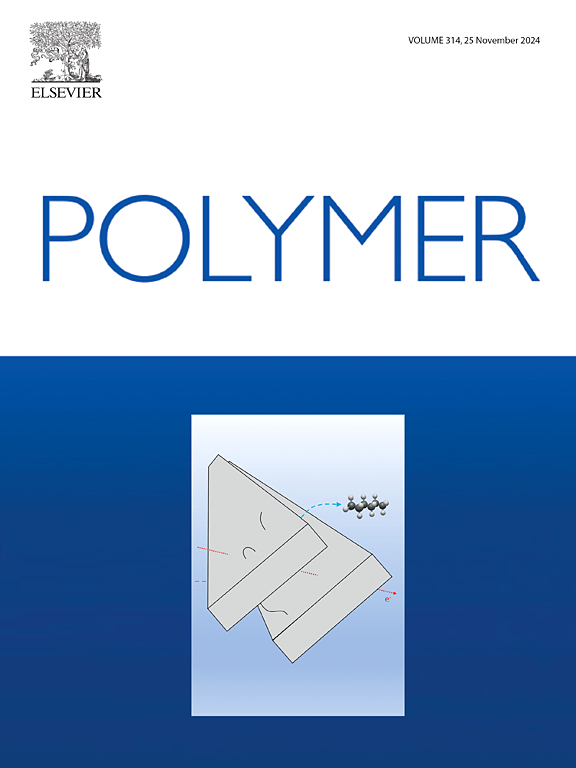4-氨基吡啶对铁离子介导的羧基丁腈橡胶交联的影响
IF 4.1
2区 化学
Q2 POLYMER SCIENCE
引用次数: 0
摘要
金属配位键被认为是弹性体材料中很有前途的交联剂。在这项工作中,羧基化丁腈橡胶(XNBR)的羧酸基与铁离子(Fe3+)相互作用在XNBR基体中产生动态交联网络。此外,通过在体系中引入4-氨基吡啶,我们能够控制交联的程度。配位键的动态性质赋予复合材料在热刺激下的可回收性。利用傅里叶变换红外光谱(FT-IR)、膨胀研究、差示扫描量热法(DSC)、流变学研究和循环应力-应变研究对制备的复合材料进行了全面表征,以研究交联过程和评价复合材料的性能。研究发现,4-氨基吡啶含量的变化对复合材料的回收效率和机械强度等性能有很大的影响。XNBR-AP-1-Fe在第三次循环后的再循环效率最高,达到80%,而XNBR-AP-1-Fe的抗拉强度最高,达到3.81 MPa。本文章由计算机程序翻译,如有差异,请以英文原文为准。


Impact of 4-aminopyridine on ferric-ion mediated cross-linking of carboxylated nitrile butadiene rubber
Metal-ligand coordination bonds have been recognized as promising cross-linkers for elastomeric materials. In this work, the interaction between the carboxylate group of carboxylated nitrile butadiene rubber (XNBR) and the ferric ion (Fe3+) generates a dynamic cross-linked network in XNBR matrix. Furthermore, by introducing, 4-aminopyridine in the system, we are able to control the degree of cross-linking. The dynamic nature of the coordination bonds imparts recyclability feature to the composite when exposed to thermal stimuli. Prepared composites are thoroughly characterized using Fourier transform infrared spectroscopy (FT-IR), Swelling study, Differential scanning calorimetry (DSC), Rheometric Study, and Cyclic stress-strain study to investigate the crosslinking process and evaluation of the composite's properties. It has been found that variation in the 4-aminopyridine content has a strong influence on the properties including the recycling efficiency and the mechanical strength of the composite. The highest recycling efficiency, after the third recycling, is found as high as 80 % for a particular composition (XNBR-AP-1-Fe) while highest tensile strength of 3.81 MPa is shown by another composition (XNBR-AP-2-Fe).
求助全文
通过发布文献求助,成功后即可免费获取论文全文。
去求助
来源期刊

Polymer
化学-高分子科学
CiteScore
7.90
自引率
8.70%
发文量
959
审稿时长
32 days
期刊介绍:
Polymer is an interdisciplinary journal dedicated to publishing innovative and significant advances in Polymer Physics, Chemistry and Technology. We welcome submissions on polymer hybrids, nanocomposites, characterisation and self-assembly. Polymer also publishes work on the technological application of polymers in energy and optoelectronics.
The main scope is covered but not limited to the following core areas:
Polymer Materials
Nanocomposites and hybrid nanomaterials
Polymer blends, films, fibres, networks and porous materials
Physical Characterization
Characterisation, modelling and simulation* of molecular and materials properties in bulk, solution, and thin films
Polymer Engineering
Advanced multiscale processing methods
Polymer Synthesis, Modification and Self-assembly
Including designer polymer architectures, mechanisms and kinetics, and supramolecular polymerization
Technological Applications
Polymers for energy generation and storage
Polymer membranes for separation technology
Polymers for opto- and microelectronics.
 求助内容:
求助内容: 应助结果提醒方式:
应助结果提醒方式:


